The Significance of the Shamrock in Global Cultures: A Symbolic Exploration
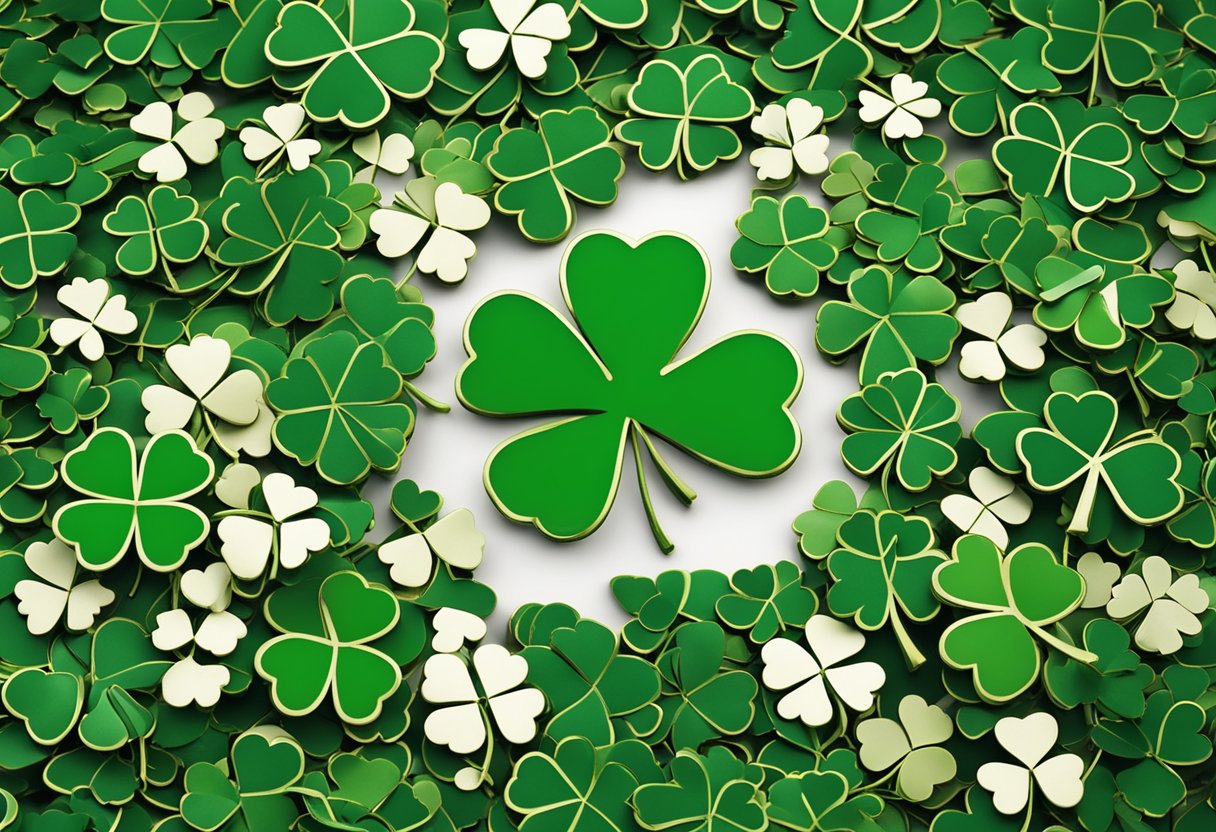
Updated On: April 22, 2024 by Maha Yassin
The shamrock, a sprig synonymous with Irish culture and St. Patrick’s Day, carries a weight of significance that transcends its simple appearance. A botanical emblem of Ireland, the shamrock’s fame is rooted in its use by St. Patrick to explain the Christian Holy Trinity to the Irish. However, its significance is not limited to religious symbolism; the shamrock has grown to embody the spirit of the Irish diaspora and is a widespread icon of luck and goodwill. Its journey from a regional symbol to a global emblem reflects the shifting tides of cultural identity and shared heritage.
As we engage in the tale of the shamrock, we witness a fascinating blend of botanical traits and cultural values. This modest plant, often mistaken for clover, has spread far beyond the Irish meadows. Its image graces everything from festive decorations to corporate logos, illustrating its strong presence in global cultures. The shamrock has also been embroiled in environmental and conservation efforts, highlighting its ecological significance. Each spring, the shamrock carries stories of history, folklore, and ongoing cultural exchange, connecting Ireland to the world.
Historical Roots of the Shamrock
The shamrock is deeply embedded in Irish history, originally used in Pagan rituals and later adopted by Christianity as a symbol of the Holy Trinity. Its transition from ancient Celtic times to a Christian emblem is intricately linked to Ireland’s narrative as a nation.
From Paganism to Christianity
The shamrock, a small, unassuming plant with three leaves, has historically held significance for various cultures. It was a sacred plant for the ancient Celts, believed to ward off evil due to its three-heart-shaped leaves. This number, three, was a powerful symbol in Celtic tradition and Pagan beliefs, representing the elements of earth, water, and air.
When Christianity spread to Ireland, it intertwined with existing local traditions. Early Christians in Ireland adopted the shamrock as a symbol due in part to its pre-existing sacred status among the Celts, making the introduction of Christian concepts less foreign.
St. Patrick’s Association with the Shamrock
St. Patrick is indelibly associated with the shamrock, which is as much a part of his legend as his work evangelising Ireland. St. Patrick had been brought to Ireland as a slave in Roman Britain, escaped, and later returned to Ireland as a Christian missionary. St. Patrick used the shamrock in his teachings to explain the Holy Trinity to nonbelievers, illustrating how three separate elements could exist as part of the same entity, mirroring the Pagan use of the number three to represent interconnected elements.
Although there are no contemporary written records of St. Patrick’s use of the shamrock, this story has been a cornerstone in Ireland’s religious conversion narrative for centuries. It encapsulates how existing symbols can be recontextualised within new cultural paradigms, such as the transition from Paganism to Christianity.
Cultural Significance in Ireland
In Ireland, the shamrock isn’t merely a plant; it’s a national emblem that encapsulates Irish identity and pride, especially resonant on St. Patrick’s Day.
National Emblem and Identity
The shamrock is deeply entwined with our national identity, serving as an emblem of Ireland on the global stage. Its three leaves are said to have been used by Saint Patrick to explain the Holy Trinity, forging a connection between the symbol and Irish Christianity. Today, the shamrock is synonymous with Irish pride and is sported with honour on St. Patrick’s Day, not just in Ireland but by the Irish diaspora worldwide. It appears on everything from official government logos to sports uniforms, showcasing a unifying symbol of our heritage.
Symbols of Irish Heritage
Across the globe, the shamrock has become an icon of Irish heritage and culture. Irish pubs, companies, and organisations use the shamrock as a marker of authentic Irish roots, a tradition honouring the past while embracing a contemporary Irish identity. Notably, the shamrock is proudly displayed on St. Patrick’s Day, celebrating our culture and history.
The shamrock’s verdant leaves represent more than just a plant; they celebrate Irishness, infusing a sense of shared identity and continuity with generations past. Our respect for the shamrock and its representation of Irish culture is integral to how we perceive ourselves and how Ireland is perceived worldwide.
Religious Symbolism
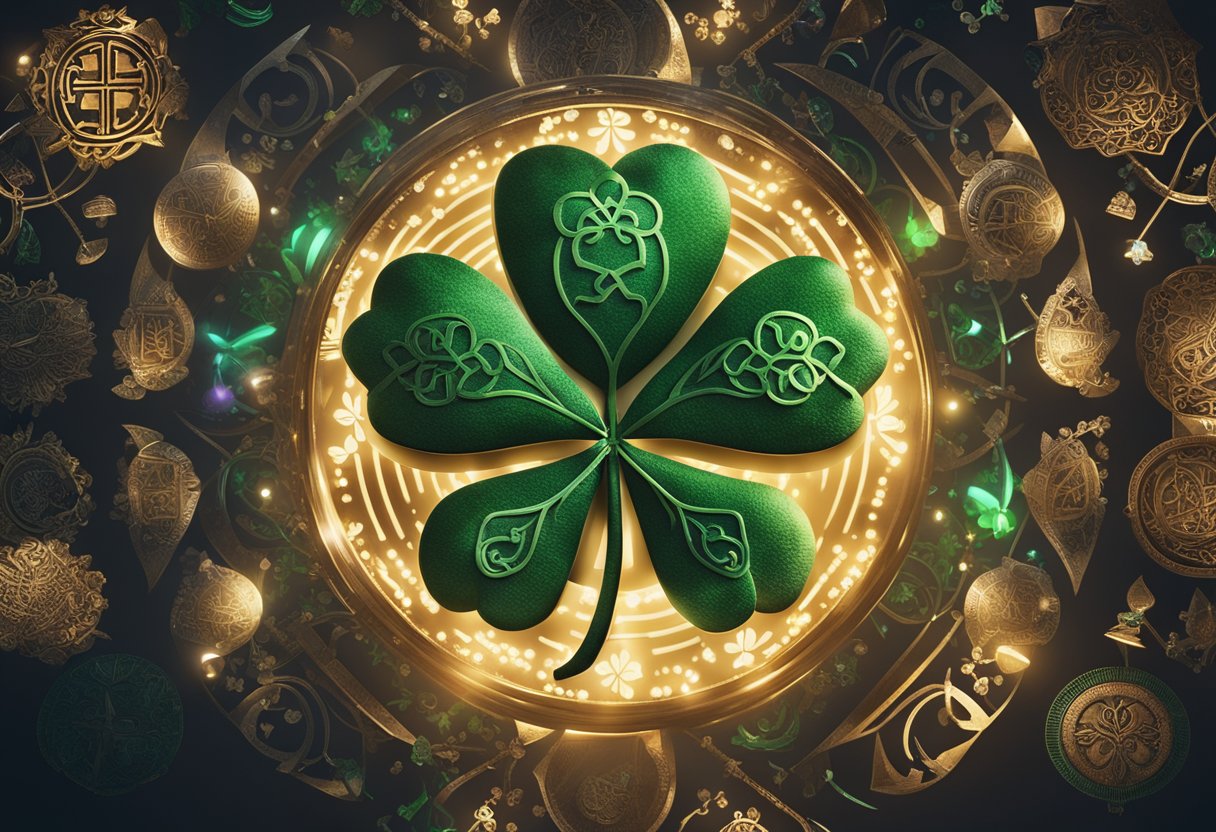
In exploring the religious symbolism of the shamrock, one cannot ignore its profound association with Christianity, particularly within the context of Irish tradition and the teachings of St. Patrick.
Holy Trinity Metaphor
The shamrock is traditionally used as a metaphor for the Holy Trinity—one of the central mysteries of Christian doctrine. The plant’s three leaves represent the Father, the Son, and the Holy Spirit, three distinct entities forming one divine union. This visual representation helps to illustrate a complex theological concept in a simple and approachable way.
St. Patrick and Christian Teachings
St. Patrick, one of the most celebrated Christian figures, particularly in Ireland, is often credited with using the shamrock in his missionary work to explain Christian teachings. Equating the shamrock’s triad of leaves with the Holy Trinity, he provided a clear and resonant symbol deeply rooted in Irish culture. This clever use of a common plant helped bridge the gap between pre-Christian beliefs and the new religious meaning he introduced.
Reviewing the significance of the shamrock within the context of Christian teachings underscores not only the adaptability of religious metaphor but also the enduring power of nature to connect us to profound spiritual truths.
Botanical Perspectives
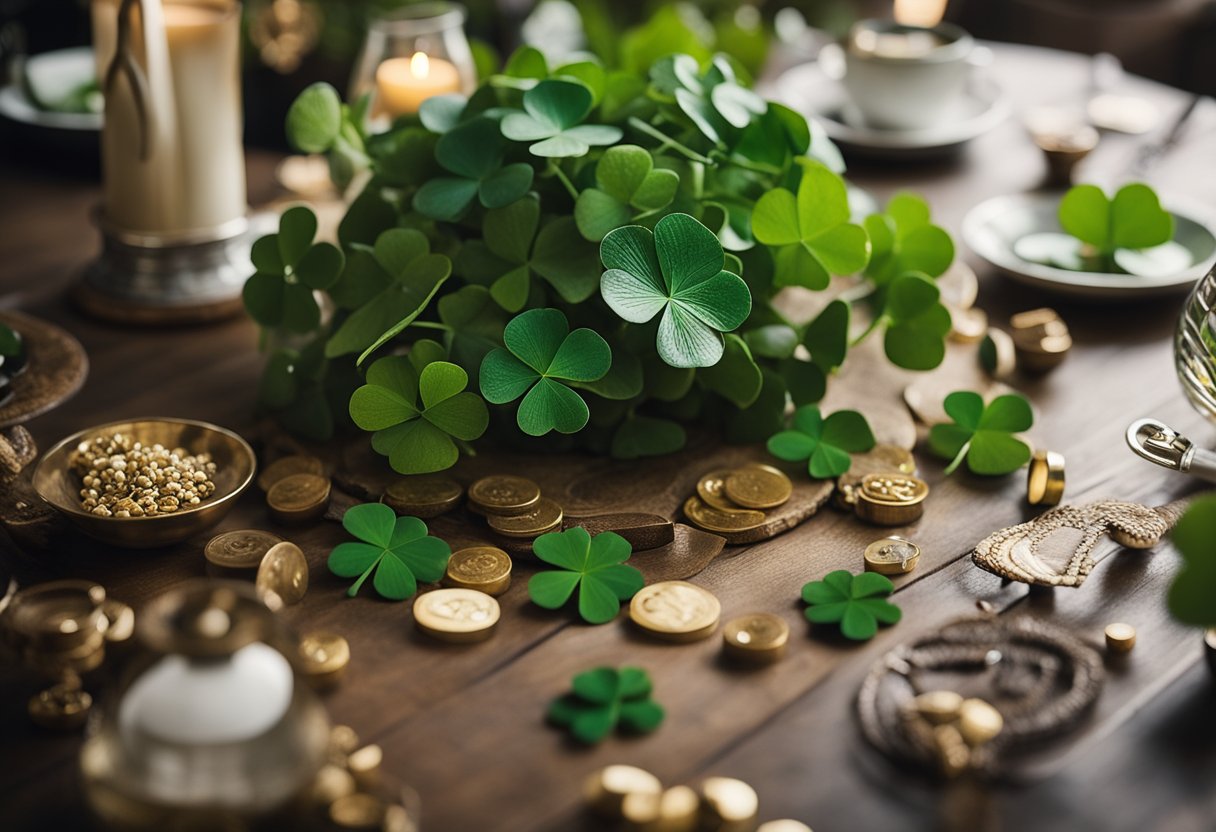
Exploring the botanical identity of the shamrock deepens our appreciation for this emblematic plant and connects us with a history steeped in science and folklore.
Species and Classification
The term ‘shamrock’ is often used to describe several plant species in the genus Trifolium (clover) and the plant Oxalis acetosella (wood sorrel). However, botanists have not universally agreed upon a single species to which this term refers. Historically, Trifolium dubium (lesser trefoil or yellow clover), Trifolium repens (white clover), and Medicago lupulina (black medick) have all been considered possible candidates.
Prominent Figures and Research:
- James Ebenezer Bicheno, a 19th-century botanist, identified the shamrock as Trifolium repens.
- Nathaniel Colgan and E. Charles Nelson, renowned for their work in the late 19th and 20th centuries, conducted extensive research. Colgan’s work involved soliciting specimens from across Ireland, while Nelson collated historical and contemporary data during his appointment at the National Botanic Gardens.
The Shamrock in Science and Folklore
The botanical study of the shamrock has been intertwined with Irish folklore and the symbol’s national significance. An Irish botanist, Caleb Threlkeld, acknowledged the shamrock’s importance in his 1726 treatise, associating it with St. Patrick’s Day. The shamrock’s most notable feature is its trifoliate leaf pattern, often connected to the Christian Holy Trinity, a part of the plant’s rich folklore heritage.
Folklore vs. Science:
- Four-leaf clover: While not truly a shamrock, it has become entwined with the plant’s mythology due to its rarity and is considered a symbol of good luck.
- The Irish Naturalist: This journal has been a scientific focal point, bridging the gap between botany and the cultural significance of the shamrock within Irish tradition and beyond.
Symbolism in Festivities
The shamrock, an emblem of Ireland, plays a central role in festivities worldwide, particularly those associated with St. Patrick’s Day, radiating cultural pride and the spirit of celebration.
St. Patrick’s Day Celebrations
In honour of St. Patrick, the patron saint of Ireland, St. Patrick’s Day is celebrated every 17 March with zeal, parades, and a sea of green that blankets streets worldwide. A staple in these celebrations is the shamrock, universally associated with St. Patrick’s Day. Individuals proudly don the shamrock, ranging from the three-leafed plant to images emblazoned on clothing and accessories.
Throughout Ireland, ‘drowning the shamrock’ is a cherished tradition that involves placing a shamrock at the bottom of a cup, which is then filled with whiskey, beer, or cider and consumed as a toast to St. Patrick, after which the shamrock may be worn or thrown over the shoulder for good luck.
International Recognition
The shamrock is not confined to the Emerald Isle; it has earned international recognition as a symbol of Irish culture and heritage. This iconic emblem adorns pubs, festivities, and parades across the globe, showcasing the far-reaching influence of Irish customs.
Green, synonymous with St. Patrick’s Day, epitomises the shamrock and the verdant landscape of the ‘Emerald Isle’, contributing to the worldwide association of the colour with all Irish festivities. The international embrace of the shamrock highlights a shared appreciation for diverse cultural expressions and the power of symbols in uniting people across borders.
Shamrock is an Icon of Luck and Goodwill

The shamrock, recognised worldwide, signifies more than just an emblem of Ireland—it’s a symbol steeped in meaning, associated with luck and goodwill. This association permeates various aspects of culture and tradition, expressing itself in superstitions and gestures of love and prosperity.
Shamrocks and Superstition
Historically, the shamrock is considered a charm against evil and bad fortune. This belief is particularly strong in Irish folklore, where carrying a shamrock is said to ward off malevolent spirits. The four-leaf clover, a rare variation of the typical three-leafed shamrock, is especially auspicious, with each leaf representing a different aspect of positive influence: hope, faith, love, and, most notably, luck.
Expressions of Love and Prosperity
Shamrocks are often exchanged as tokens of love and wish for good fortune. Even beyond Irish shores, it’s a custom to present shamrocks to loved ones, symbolising an unbreakable bond and a desire for thriving prosperity. This use of the shamrock to convey sentiments is testament to its powerful, universal language of goodwill.
Global Spread and Influence

The shamrock, a symbol deeply rooted in Irish culture, has permeated various cultures globally, carrying a legacy that individuals of Irish descent and others celebrate.
The Shamrock in Diaspora Communities
In the United States, cities like Boston and San Francisco have significant populations of Irish immigrants and individuals of Irish descent. It’s no surprise that the shamrock has found a place in the cultural expressions of these communities. St. Patrick’s Day Celebrations: See streets lined with green, and the shamrock is proudly showcased in parades and festivities.
Influence Beyond the Irish Shores
The shamrock has grown to achieve international relevance beyond the Irish shores, resonating within the cultures of England, Scotland, and Wales. In these locations, the shared Celtic heritage has embraced the shamrock, incorporating it into various aspects of life, enabling it to become a symbol of broader Celtic affinity.
Commercial and Modern Usage

Beyond its traditional Irish symbolism, the shamrock has been adopted widely in commercial contexts, becoming synonymous with Irish identity and heritage globally. It’s integral to branding and is frequently adapted for various modern products.
Marketing and Branding
The shamrock is prestigious in marketing and branding, particularly for companies that wish to tout their Irish roots or association with Ireland. One such entity is Aer Lingus, the national airline of Ireland, which utilises the shamrock as part of its logo. This emblem not just symbolises the airline’s heritage but is also a strategic mark of authenticity that resonates with international travellers.
Guinness, another renowned Irish brand, deftly incorporates the shamrock in promotional activities, connecting its products with Irish pride and tradition. In the context of Guinness branding, the shamrock becomes a beacon of quality and cultural heritage.
Modern Adaptations and Souvenirs
Shamrock has seen a creative expansion into jewellery and accessories in modern adaptations. These range from elegant pieces crafted in precious metals to casual wear adorned with the shamrock, serving as fashion statements and emblems of luck or pride.
Souvenirs adorned with shamrocks across Ireland and in online stores such as Connolly Cove cater to a global audience eager to own a piece of Irish charm. They embody the blend of tradition and modernity that the shamrock represents in today’s vibrant Irish culture.
Environmental and Conservation Efforts
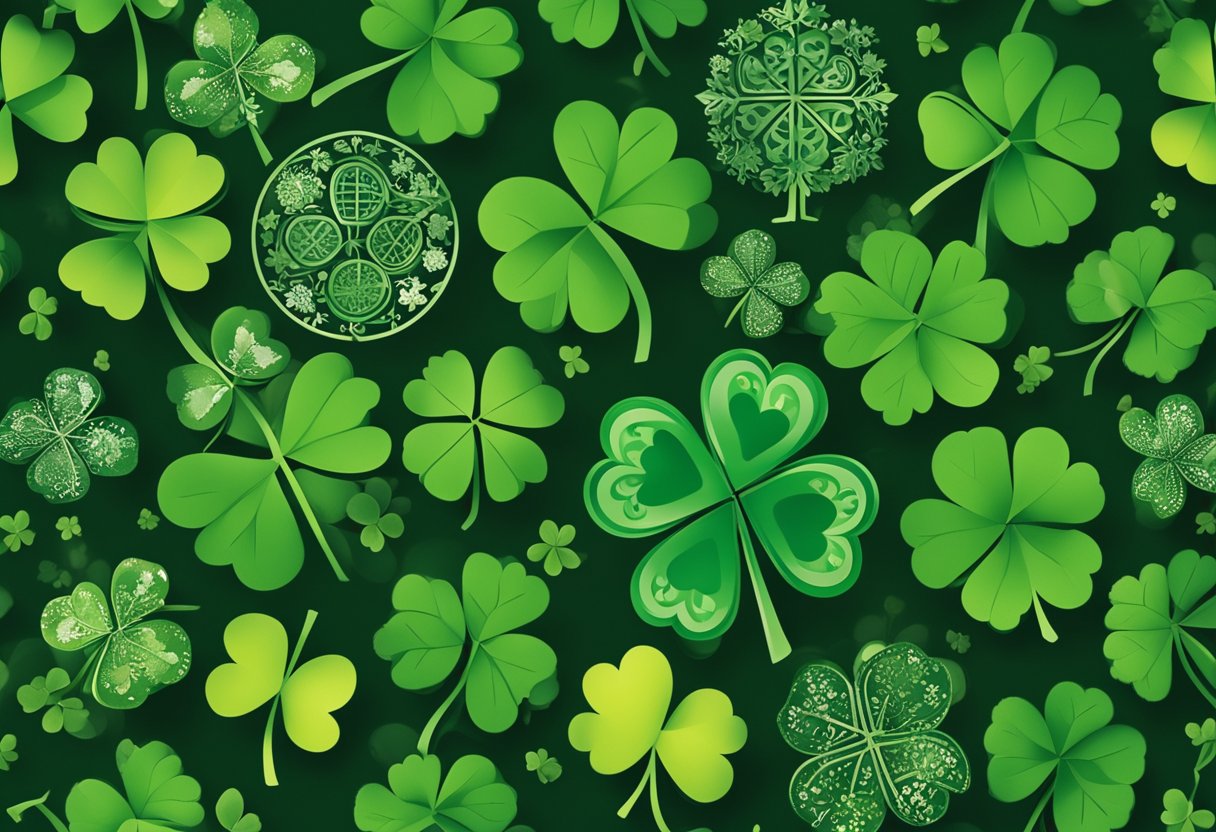
In our efforts to underline the importance of the shamrock in global cultures, we must address the environmental and conservation strategies that protect this symbol of heritage. We’re specifically focusing on the preservation of native species and the role of the shamrock in habitat conservation.
Protection of Native Species
The shamrock, a plant native to our emerald isles, is a significant symbol in Irish culture. We recognise its vulnerability to environmental changes and habitat loss. Conservation efforts are essential to safeguard this native species, which holds great cultural and ecological value. The Department of Agriculture often plays a pivotal role by implementing policies encouraging the cultivation and protection of native flora, including the shamrock, ensuring these plants thrive in their natural habitats.
The Shamrock in Habitat Preservation
Incorporating the shamrock into habitat preservation initiatives illustrates the broader commitment to environmental conservation. This plant contributes to the ecosystem’s biodiversity and serves as an emblem for conservation messages worldwide. By protecting the habitats where the shamrock grows, we simultaneously support various native species that rely on this environment. It’s a holistic approach that underscores the interconnectedness of our ecosystem and cultural identity.
Conclusion
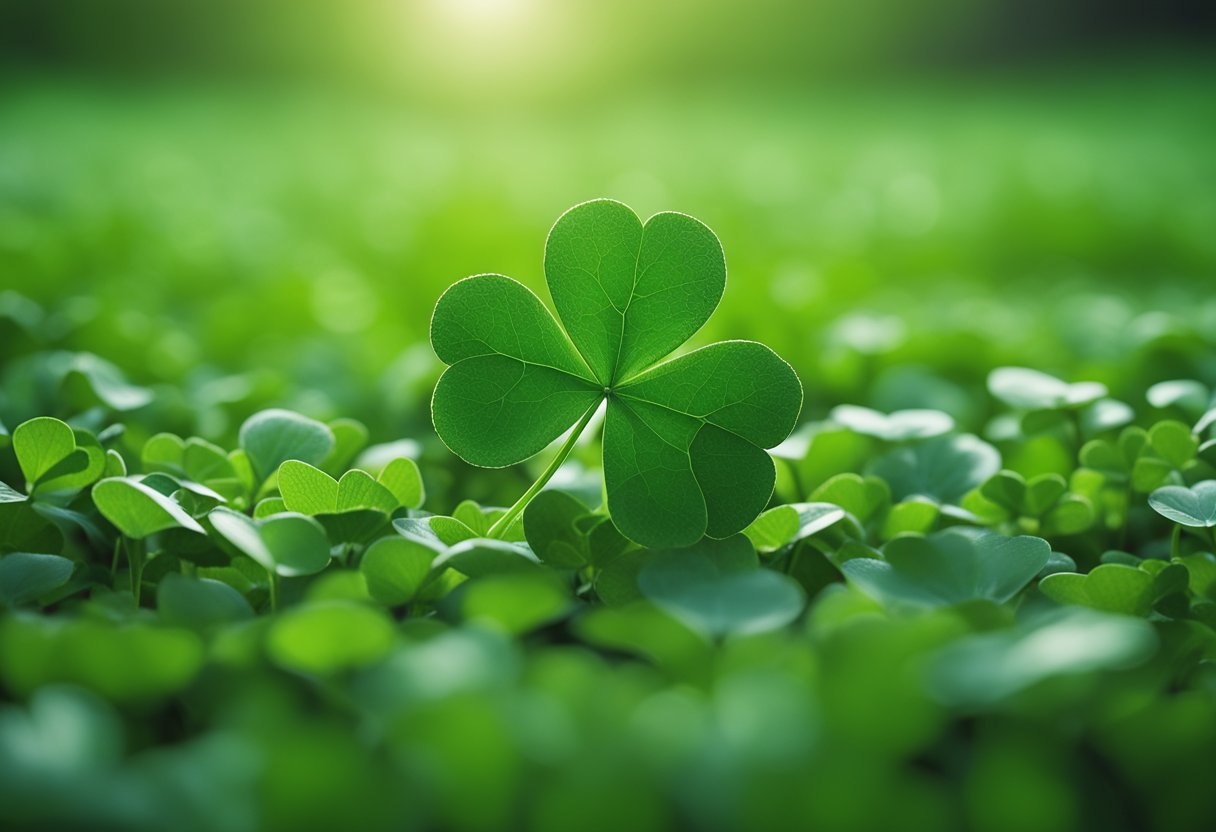
The shamrock has transcended its Irish origins to secure a place in the cultural consciousness of societies around the globe. We see this small but mighty plant as a beacon of Irish identity, yet its influence is far-reaching due to its embodiment of universal themes such as balance, harmony, and life cycle.
Its global impact is perhaps most evident each March, when St. Patrick’s Day celebrations invite everyone, irrespective of nationality, to don a shamrock and embrace the Irish spirit. This inclusion reflects the plant’s power to unite diverse peoples under common cultural symbols.
The shamrock serves as a national emblem within Ireland, but its significance as a unifying global icon cannot be overstated. From the streets of Dublin to distant continents, the shamrock’s three leaves continue to resonate, symbolising not just an island nation but a worldwide appreciation for cultural heritage and shared human experience.
Acknowledging the shamrock’s unifying symbolism honours our collective history and reinforces our commitment to cultural diversity. It’s a testament that some traditions, like the shamrock, possess a singular ability to cross borders and become woven into the fabric of global cultures.
Frequently Asked Questions
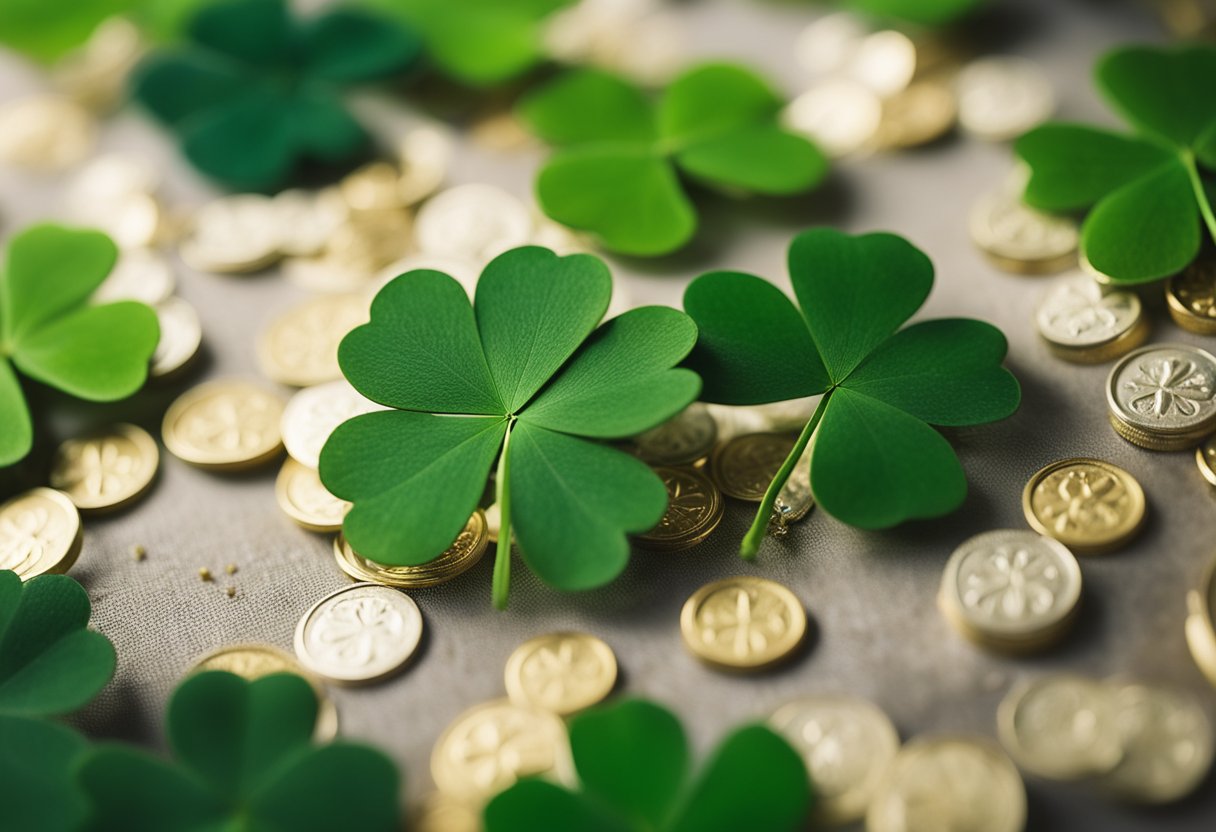
In this section, we address the most common inquiries regarding the global significance of the shamrock, delving into its symbolism across cultures, spiritual interpretations, and historical uses.
What does the shamrock symbolise in various cultures around the world?
The shamrock is a potent emblem of Irish identity, often embodying notions of luck and prosperity. Its symbolism can vary globally, but it generally retains connotations of growth and vitality.
How is the shamrock interpreted in spiritual contexts?
In spiritual contexts, the shamrock has been linked to the Holy Trinity in Christian tradition, representing the Father, Son, and Holy Spirit. It also serves as a metaphor for balance and harmony in nature.
In what ways does the shamrock differ from a clover in symbolism?
While the shamrock and clover are associated with Ireland, the shamrock specifically symbolises good luck and is deeply rooted in Irish tradition, often related to St. Patrick’s teachings.
What makes the shamrock distinct and special in comparison to other plants?
Its uniqueness lies in its three-leaf formation, making it an atypical feature in the plant world, and this rarity has elevated the shamrock to the status of a natural marvel.
Why is the shamrock often associated with Ireland and its heritage?
The shamrock is intrinsically linked to Ireland’s heritage because of its historical use by St. Patrick in his teachings about Christianity and its subsequent adoption as a national symbol.
How has the shamrock been used historically as a sacred plant?
Historically, the shamrock was considered sacred due to its use by Druids in rituals and its symbolic importance in early Irish Christianity. It has been revered as a symbol of rebirth and eternal life.






